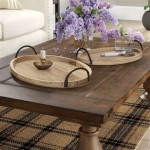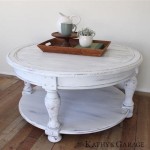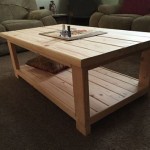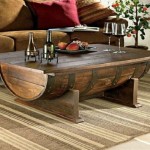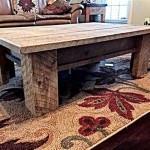Should Bedside Tables Be Lower Than Bed Heigh?
The placement of bedside tables is an essential aspect of bedroom design that often gets overlooked. These tables serve as convenient platforms for various items, including lamps, books, alarm clocks, and personal belongings. While selecting a bedside table, considerations often include aesthetics, material, and storage capacity, the height of the table relative to the bed becomes a critical factor influencing both functionality and ergonomics. The question of whether bedside tables should be lower than the bed height necessitates a detailed examination of various factors, encompassing practical convenience, aesthetic harmony, and potential health considerations.
The primary function of a bedside table is to provide accessible storage and a readily available surface within easy reach from the bed. This accessibility is considerably impacted by the relative height of the table. A table that is significantly lower than the bed may require the occupant to strain or reach downwards awkwardly to retrieve items, particularly when in a reclined or semi-reclined position. Conversely, a table that is much higher might necessitate lifting items upwards and over, which could be cumbersome and potentially lead to accidental spills or disturbances. The ideal height, therefore, aims to strike a balance that minimizes unnecessary movement and allows for comfortable access.
The standard height of a bed typically ranges from 20 to 25 inches, measured from the floor to the top of the mattress. Variations exist based on mattress thickness, the presence of a box spring, and the overall design of the bed frame. Platform beds, for instance, tend to be lower to the ground, while beds with thicker mattresses or box springs will naturally sit higher. When determining the appropriate height for a bedside table, accurately measuring the height of the bed is crucial. This measurement serves as the baseline for calculating the optimal height of the corresponding table.
Ergonomics and Accessibility
Ergonomics plays a key role in determining the ideal height of bedside tables. The goal is to minimize strain and promote comfort when reaching for items, whether it's a glass of water, a book, or a phone. A table that is too low forces the user to bend excessively, potentially causing discomfort in the neck, back, and shoulders. A table that is too high, on the other hand, can lead to reaching upwards and outwards, straining the shoulder and arm muscles. Ideally, the top surface of the bedside table should be level with the top of the mattress or slightly higher, perhaps by a few inches. This allows the user to easily reach items without excessive bending or stretching.
Accessibility considerations are especially important for individuals with mobility issues or those recovering from injuries. For these individuals, a bedside table that is easily accessible is crucial for maintaining independence and comfort. Lower tables can pose a significant challenge, requiring more effort and potentially increasing the risk of falls. A higher table, within reasonable limits, can provide a more convenient and safer option. It is also advisable to consider bedside tables with adjustable height options to cater to individual needs and preferences.
The placement of a bedside lamp is also closely tied to ergonomics. The lamp should be positioned at a height that provides adequate lighting for reading or other activities without causing glare or discomfort. A lower table might require a taller lamp to achieve the desired illumination, potentially making the lamp more prone to tipping over. A table at an appropriate height allows for a more stable lamp base and optimal lighting angle.
Aesthetics and Room Harmony
Beyond practical functionality, the visual appeal of the bedside table and its overall contribution to the bedroom's aesthetic should also be considered. The height of the bedside table relative to the bed plays a role in creating a balanced and harmonious look. A table that is significantly lower than the bed can appear visually unbalanced, creating a sense of disproportion. Conversely, a table that towers over the bed can be equally jarring and disrupt the visual flow of the room.
Maintaining visual harmony involves considering the overall style and design of the bedroom. In a minimalist room, for instance, a bedside table that closely matches the height of the bed can contribute to a clean and streamlined aesthetic. In a more traditional room, a slightly lower table might be preferred to create a sense of depth and visual interest. The perceived height of the table can be subtly adjusted through the accessories placed on top, such as books, decorative objects, or lamps. Carefully chosen accessories can help to balance the visual weight and create a cohesive look.
The size and proportions of the bedside table should also be in harmony with the size of the bed and the overall dimensions of the room. A small bedside table next to a large bed can appear insignificant, while a large table in a small room can feel overwhelming. Choosing a bedside table that is appropriately sized and scaled to the surrounding furniture and space is essential for creating a visually pleasing and balanced bedroom.
Specific Cases and Considerations
While a general guideline suggests that bedside tables should be at or slightly above the height of the mattress, certain situations necessitate a more tailored approach. These situations may involve specific individual needs or unique bedroom layouts that warrant deviations from the standard recommendations.
Platform Beds: Platform beds, characterized by their low profile, often present a unique challenge when selecting bedside tables. A standard-height bedside table might appear disproportionately tall next to a platform bed. In such instances, opting for a lower bedside table is generally recommended to maintain visual balance. However, it's crucial to ensure that the lower table still provides adequate accessibility and doesn't require excessive bending or reaching.
Adjustable Beds: Adjustable beds, which allow users to adjust the angle of the head and foot of the bed, require careful consideration when determining the appropriate height of bedside tables. When the head of the bed is raised, the effective height of the bed increases. In this case, a slightly higher bedside table may be more suitable to maintain accessibility when the bed is in an inclined position. Choosing a bedside table with adjustable height features can provide even greater flexibility and adaptability to varying bed positions.
Storage Needs: The amount of storage required in the bedside table can also influence the ideal height. If the bedside table needs to accommodate a large number of books, medications, or other items, a taller table with ample storage space might be necessary. However, it's important to ensure that the increased height doesn't compromise accessibility or create a visually unbalanced look. Exploring options such as bedside tables with drawers or shelves can help to maximize storage capacity without significantly increasing the overall height.
Children's Bedrooms: In children's bedrooms, the height of the bedside table should be appropriate for the child's age and height. A table that is too high can be difficult for a child to reach and can also pose a safety hazard. Opting for a lower table that is within easy reach and features rounded edges can help to create a safer and more accessible environment for children.
Ultimately, determining whether bedside tables should be lower than the bed height requires a careful assessment of individual needs, aesthetic preferences, and specific room layouts. Prioritizing ergonomic considerations, visual harmony, and safety factors can help to guide the selection process and ensure that the chosen bedside table contributes to a comfortable and functional bedroom environment.

Our Ultimate Guide To Bedside Table Sizes

How To Choose The Ideal Nightstand Bedside Table Linenme

Nightstand Dimensions 5 Tips For Choosing The Right

Our Ultimate Guide To Bedside Table Sizes

How To Choose The Ideal Nightstand Bedside Table Linenme

Our Ultimate Guide To Bedside Table Sizes

How To Choose The Ideal Nightstand Bedside Table Linenme

Should Nightstands Be Higher The Same Height Or Lower Than Beds

How To Match A Bed And Bedside Tables Top 10 Design Tricks

How To Feng Shui Your Nightstand Well Good
Related Posts


